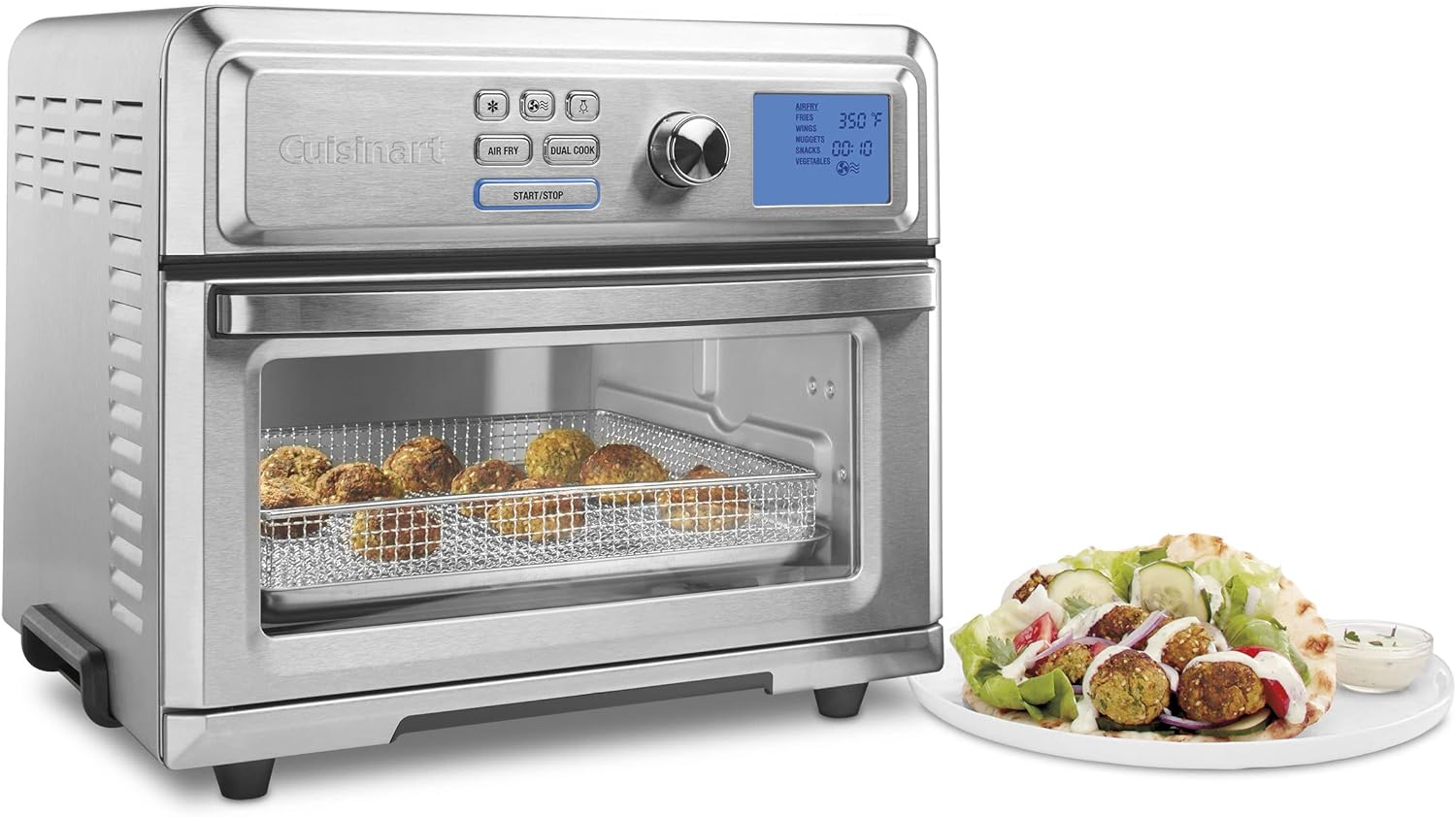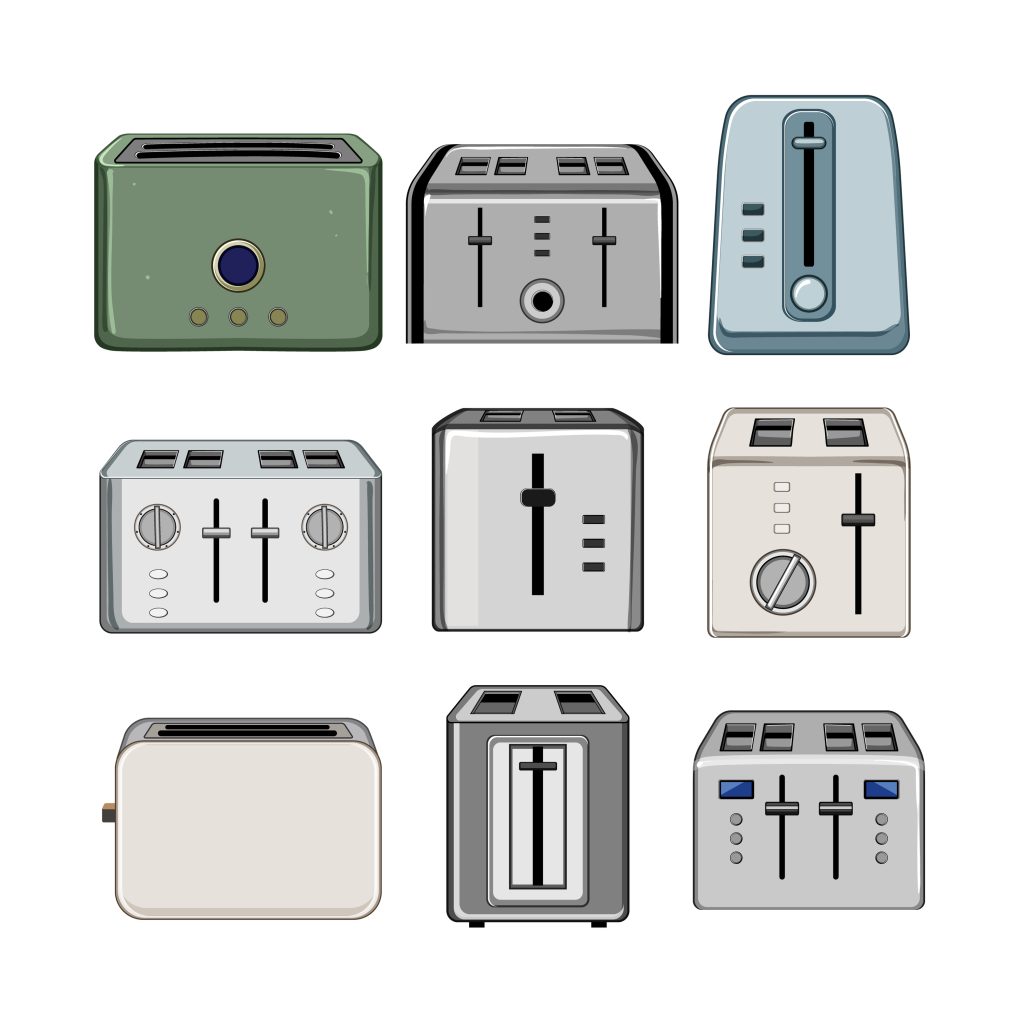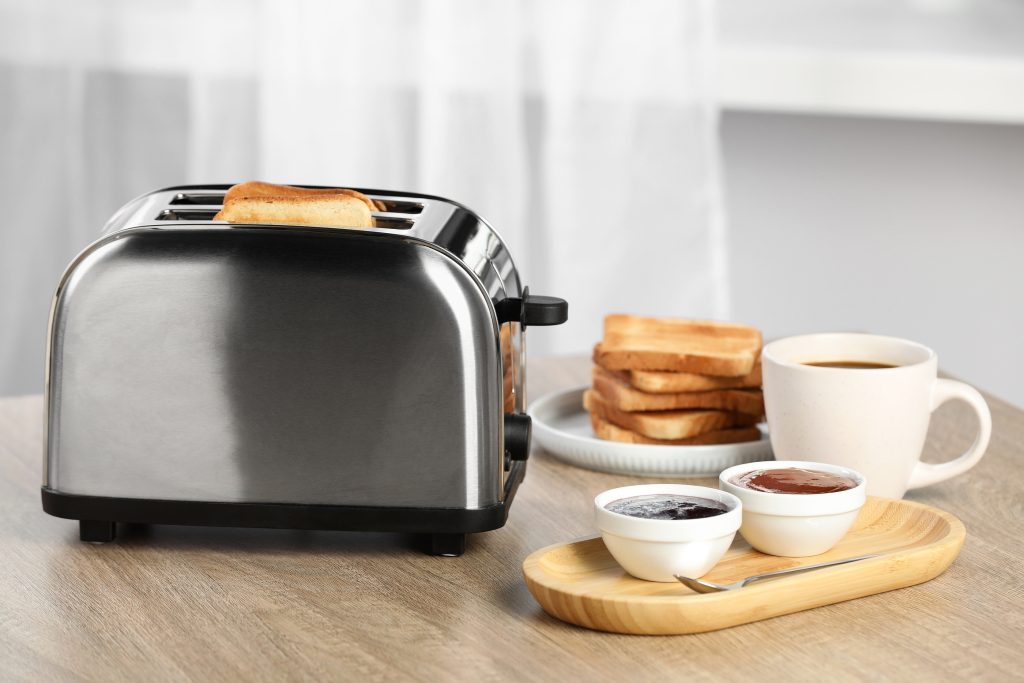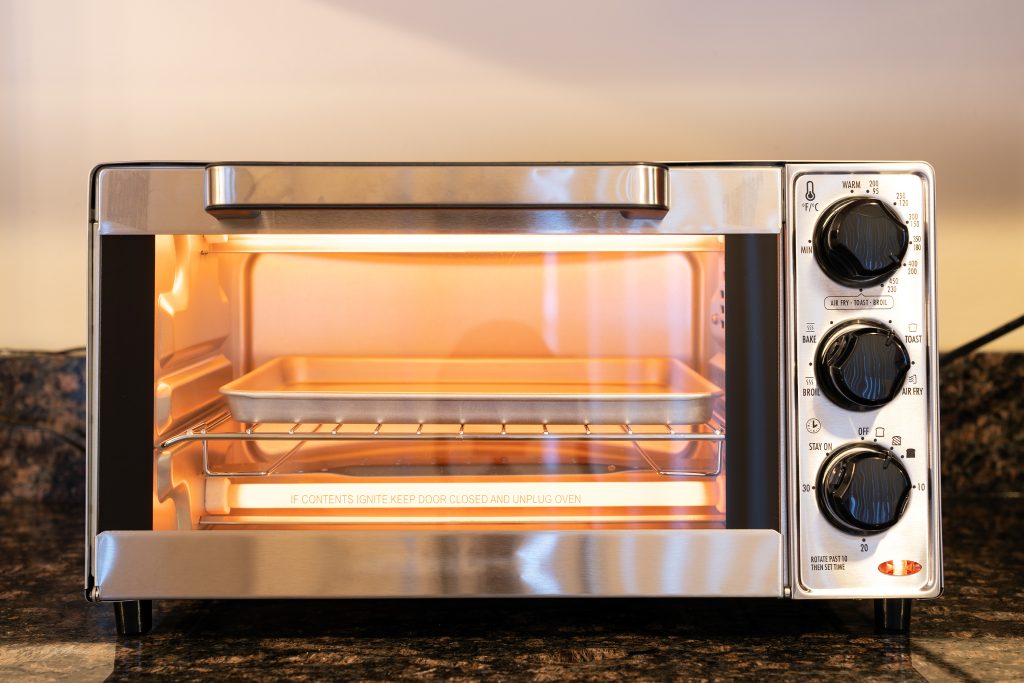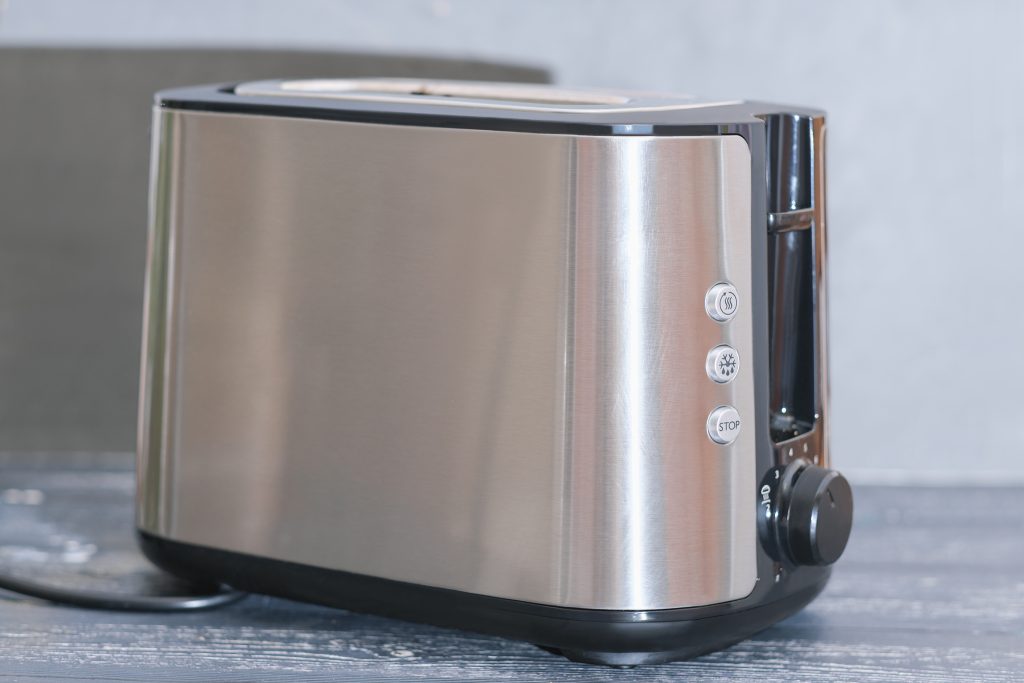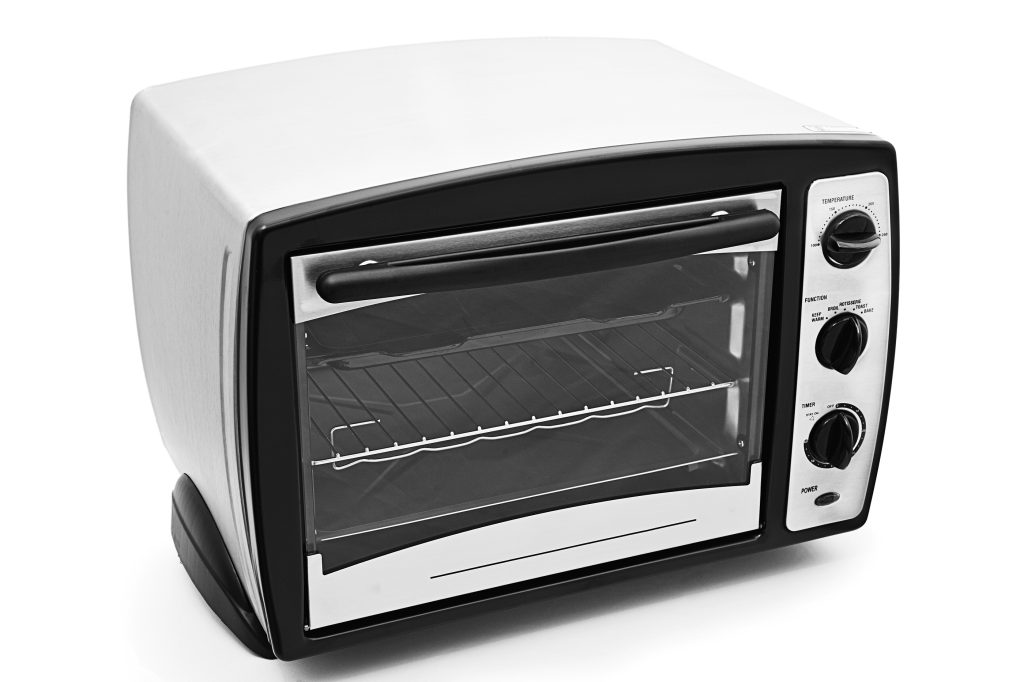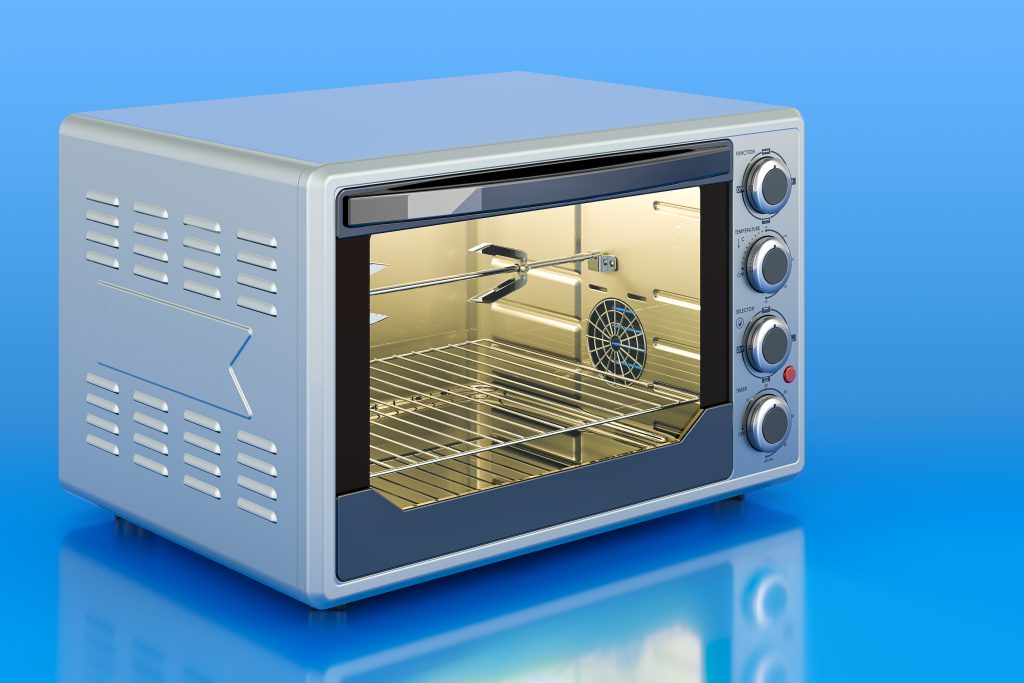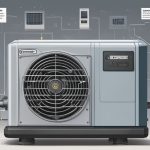Unlock the Magic of Toasters and Toaster Ovens: A Comprehensive Buyer’s Guide
Toasters and toaster ovens are kitchen appliances that may seem small but play a significant role in our daily lives. These versatile devices can do much more than brown your bread. They can be toasting, baking, roasting, reheating, and even cooking entire meals. Whether you’re a busy professional, a college student, or a culinary enthusiast, a toaster or toaster oven can be a valuable addition to your kitchen. This comprehensive buyer’s guide will help you understand the key factors to consider when purchasing these appliances and unlock their culinary magic.
Let’s dive into the world of toasters and toaster ovens, where you’ll discover the perfect appliance to meet your culinary needs, from crispy toast to gourmet meals.
Introduction to Toasters and Toaster Ovens
Toasters and toaster ovens are kitchen appliances that have become indispensable in modern households. While their primary purpose is to toast bread, they offer a wide range of cooking functions, making them versatile tools for meal preparation. In this section, we’ll introduce you to the basics of these appliances, their functions, and how they can add convenience and culinary magic to your kitchen.
Toasters:
Toasters are compact kitchen appliances designed to toast bread and other baked goods. They’re known for their simplicity and speed. Here’s what you need to know about toasters:
- Toasting: The primary function of a toaster is to toast slices of bread to your preferred level of crispiness. Most toasters have adjustable browning settings, allowing you to control the degree of toasting.
- Pop-Up Mechanism: Toasters are equipped with a pop-up mechanism that automatically lifts the toasted slices when they’re done.
- Slots: Standard toasters usually have two slots, but models with four slots are also common. Some toasters offer wider slots to accommodate thicker slices and even bagels.
- Ease of Use: Toasters are incredibly user-friendly. Insert your bread slices, select the browning level, and press the lever to start toasting.
- Compact Size: Toasters are typically compact and take up minimal counter space. They are ideal for those with limited kitchen space.
Toaster Ovens:
Toaster ovens, on the other hand, are more versatile kitchen appliances that combine the functions of a traditional toaster with the capabilities of a small oven. They offer a broader range of cooking options beyond toasting. Here’s what you need to know about toaster ovens:
- Toasting: Like toasters, toaster ovens can also toast bread, bagels, and other baked goods. They often have a dedicated toasting function.
- Baking and Roasting: Toaster ovens can bake, roast, and reheat various foods. You can use them to prepare everything from cookies and pizzas to roasted vegetables and leftovers.
- Broiling: Many toaster ovens have a broil setting, allowing you to cook dishes like steaks, fish, and casseroles.
- Size Variability: Toaster ovens come in different sizes, from compact models suitable for small kitchens to larger units with multiple cooking racks for more extensive meal preparation.
- Temperature Control: You can adjust the temperature settings on toaster ovens, providing precise control over the cooking process.
- Timers and Presets: Some toaster ovens feature timers and presets for specific cooking functions, making meal preparation more convenient.
Both toasters and toaster ovens offer quick and efficient ways to prepare breakfast, snacks, and even full meals. The choice between them depends on your cooking needs and available kitchen space. In the following sections of this buyer’s guide, we’ll delve deeper into the types of toasters and toaster ovens, their key features, and what to consider when purchasing. Whether you’re a toast lover or a budding home chef, you’ll discover the perfect appliance to unlock culinary delights in your kitchen.
Types of Toasters and Toaster Ovens
You’ll encounter various types and models when shopping for toasters and toaster ovens. Each type offers unique features and functions to suit different cooking needs. In this section, we’ll explore the various types of toasters and toaster ovens, helping you make an informed choice based on your culinary preferences and kitchen space.
Types of Toasters:
- Pop-Up Toasters: Standard Toasters are the most common and traditional toasters. They usually have two slots and are ideal for toasting slices of bread, bagels, and small pastries.
- Four-Slice Toasters: A variation of the standard toaster, these models come with four slots, allowing you to toast more slices simultaneously.
- Long Slot Toasters: Designed with longer slots, these toasters can accommodate artisan bread or larger slices.
- Toaster Ovens:
- Countertop Toaster Ovens: These versatile appliances serve as compact ovens. They’re perfect for toasting, baking, roasting, broiling, and reheating various dishes.
- Convection Toaster Ovens: These models feature a convection fan, which circulates hot air for more cooking. They’re excellent for baking and roasting.
Types of Toaster Ovens:
1. Basic Toaster Ovens:
- Basic Toaster Ovens: These models offer toasting, baking, and broiling functions. They are simple and affordable, suitable for basic cooking needs.
2.Multi-Function Toaster Ovens:
- Rotisserie Toaster Ovens: Equipped with a rotisserie feature, these ovens are perfect for roasting whole chickens and other meats.
- Pizza Toaster Ovens: Designed with a wide and shallow interior, these ovens are ideal for cooking pizzas.
- Air Fryer Toaster Ovens: Combining toaster ovens with air frying capabilities, these appliances can cook with little to no oil, making them a healthier option for frying.
3.Infrared Toaster Ovens:
- Infrared Toaster Ovens: These ovens use infrared heating technology, allowing faster and more energy-efficient cooking.
4.Smart Toaster Ovens:
- Smart Toaster Ovens: Equipped with Wi-Fi connectivity and app control, these ovens enable remote monitoring and control of cooking settings through your smartphone.
5.Commercial Toaster Ovens:
- Commercial Toaster Ovens: Designed for heavy-duty use in commercial kitchens, these ovens are larger and built to withstand frequent and intensive cooking.
6.Toaster Oven with Microwave:
- Toaster Ovens with Microwave: Combining the functions of a toaster oven and a microwave, these appliances offer versatile cooking options for a wide range of dishes.
7.Under Cabinet Toaster Ovens:
- Under Cabinet Toaster Ovens: These space-saving models are designed to be mounted under kitchen cabinets, saving counter space.
Your toaster or oven should align with your cooking preferences and kitchen space. Whether you prefer a simple and straightforward toaster, a multifunctional toaster oven, or a smart kitchen appliance, there’s a type to suit your needs. In the following sections of this buyer’s guide, we’ll delve into the key features, size considerations, and other factors to help you make an informed decision.
Key Features to Consider When Buying Toasters and Toaster Ovens
To make an informed purchase of toasters and toaster ovens, it’s crucial to understand the key features that can significantly impact their performance and versatility. Here are the essential features to consider:
For Toasters:
- Browning Control:
-
- The ability to adjust the browning level is a fundamental feature. Look for a toaster with multiple browning settings to achieve your desired toastiness.
- Number of Slots:
-
- Choose between two-slot and four-slot toasters based on your household’s toast consumption. A four-slot toaster is more convenient for a family.
- Extra-Wide Slots:
-
- Opt for a toaster with extra-wide slots to accommodate thicker slices of bread, bagels, and artisanal bread.
- Lift and Look Function:
-
- This feature allows you to check the toasting progress without interrupting the cycle. It’s handy for avoiding burnt toast.
- Defrost Function:
-
- If you often toast frozen items, a defrost function is essential. It adjusts the toasting time to accommodate frozen bread or pastries.
For Toaster Ovens:
1.Size and Capacity:
-
- Consider the interior size and capacity of the toaster oven. Larger ovens can accommodate bigger dishes and multiple servings.
2.Cooking Functions:
-
- Look for a toaster oven with various cooking functions, such as baking, broiling, roasting, reheating, and convection cooking.
3.Temperature Control:
-
- Precise temperature control is crucial for various recipes. Ensure the toaster oven offers a wide temperature range and accurate settings.
4.Timer:
-
- A timer with an audible alert is essential for precise cooking. Some models offer a stay-on feature for longer cooking times.
5.Convection Fan:
-
- A convection fan ensures even cooking by circulating hot air. It’s especially useful for baking and roasting.
6.Removable Crumb Tray:
-
- A removable crumb tray makes cleaning easy. It collects crumbs and spills, preventing them from burning on the oven’s bottom.
7.Interior Lighting:
-
- An interior light allows you to monitor the cooking process without opening the oven’s door, which can affect cooking temperatures.
8.Accessories:
-
- To expand its versatility, check if the toaster oven has accessories such as baking pans, broiling racks, and pizza stones.
9.Safety Features:
-
- To prevent accidents, look for safety features like auto-shutoff, cool-touch handles, and a heat-resistant exterior.
10.Digital or Manual Controls:
-
- Choose between digital controls for precision or manual controls for simplicity based on your preference.
11.Smart Features:
-
- Some modern toaster ovens offer Wi-Fi connectivity and smartphone apps for remote monitoring and control.
Common Features for Both:
1.Cord Length and Storage:
-
- Consider the cord length and whether the toaster or oven has a cord storage feature to keep countertops tidy.
2.Design and Aesthetics:
-
- Choose a design and color that complements your kitchen’s decor and personal style.
3.Brand Reputation:
-
- Opt for well-established brands with a history of producing reliable, durable kitchen appliances.
4.Warranty:
-
- Check the warranty to ensure you’re covered for defects or malfunctions.
By paying attention to these key features, you can select a toaster or oven that meets your cooking needs and preferences. Remember that the right features can significantly enhance your cooking experience and the versatility of your kitchen appliances.
Size and Capacity: Finding the Right Fit for Your Toaster or Toaster Oven
The size and capacity of your toaster or oven are critical factors influencing its functionality, versatility, and suitability for your kitchen. Your choice should align with your cooking needs and the available counter space. In this section, we’ll explore how to determine the ideal size and capacity for your toaster or toaster oven.
For Toasters:
- Number of Slots:
-
- Standard toasters typically come with two slots, suitable for small households or individuals.
- Four-slot toasters are more convenient for families or when you have guests over. They can handle higher toast demands.
- Slot Width:
-
- Check the slot width to ensure it can accommodate the types of bread or pastries you prefer. If you enjoy bagels or thicker slices of bread, consider a toaster with extra-wide slots.
- Dimensions:
-
- Pay attention to the toaster’s dimensions, including height, width, and depth. Ensure it fits on your kitchen counter and allows sufficient space for other appliances.
For Toaster Ovens:
- Interior Capacity:
-
- Toaster ovens come in various sizes, and their interior capacity is measured in liters or cubic feet. Consider the cooking tasks you’ll perform and the serving sizes you need.
- Small toaster ovens (around 16 liters) are suitable for individuals and small kitchens.
- Medium toaster ovens (between 16-30 liters) offer versatility for various cooking tasks and are ideal for small families.
- Large toaster ovens (over 30 liters) are spacious and can accommodate larger dishes, making them suitable for families and more extensive meal preparation.
- Interior Dimensions:
-
- Check the interior dimensions to ensure they can accommodate your cookware, baking sheets, and dishes. Ensure enough space for the items you plan to cook or reheat.
- Exterior Dimensions:
-
- Measure the available counter space to ensure the toaster oven fits comfortably. Leave space around the appliance for ventilation and safety.
- Shelf or Rack Positions:
-
- Some toaster ovens come with multiple shelf or rack positions. This feature enhances cooking flexibility by allowing you to adjust the cooking distance from the heating elements.
- Size vs. Cooking Versatility:
-
- Larger toaster ovens offer more cooking versatility but may consume more counter space. Consider a size that balances your cooking needs with your available kitchen space.
- Weight:
-
- Consider the weight of the toaster oven, especially if you plan to move it around. Lighter models are more portable, while heavier ones are more stable.
- Door Design:
-
- Check if the toaster oven has a drop-down door or a side-swing door. Choose a design that suits your kitchen layout and accessibility.
Remember that the right size and capacity can affect the appliance’s performance and how well it integrates into your kitchen. Evaluate your cooking habits, the number of people you typically cook for, and the available kitchen space to select a toaster or oven that perfectly matches your needs.
Heating Technology: Understanding How Toasters and Toaster Ovens Work
The heating technology employed in toasters and toaster ovens plays a significant role in these appliances’ speed, efficiency, and versatility. It determines how evenly and quickly they can toast, bake, roast, and reheat your favorite dishes. In this section, we’ll explore the common heating technologies used in these appliances and what to consider when choosing one that suits your needs.
Heating Technology in Toasters:
**1. Quartz Heating Elements:
- Many modern toasters use quartz heating elements. These elements heat up quickly and provide even toasting across the bread’s surface.
**2. Nichrome Wire Heating Elements:
- Nichrome wire heating elements are common in traditional toasters. They’re reliable but may take slightly longer to reach the desired toasting temperature.
**3. Infrared Heating:
- Some high-end toasters employ infrared heating technology. This method is known for its speed and efficiency, delivering consistent browning in a short time.
Heating Technology in Toaster Ovens:
**1. Quartz Heating Elements:
- Toaster ovens often use quartz heating elements for their rapid heating capabilities. These elements offer precise temperature control and even cooking.
**2. Convection Heating:
- Many toaster ovens have a convection fan, which circulates hot air around the food. Convection heating ensures even cooking, making it suitable for baking, roasting, and more.
**3. Infrared Heating:
- Infrared toaster ovens utilize radiant heat to cook food quickly and evenly. This technology is excellent for broiling and high-temperature cooking.
**4. Combination Heating:
- To offer versatile cooking options, some toaster ovens combine heating technologies, such as quartz, convection, and infrared. These models can handle a wide range of recipes.
What to Consider:
- Cooking Tasks: Consider the cooking tasks you frequently perform. Basic heating technologies may suffice if you use your toaster or toaster oven primarily for toasting or simple reheating. However, convection or infrared heating models can be more efficient for versatile cooking, like baking or roasting.
- Temperature Control: Ensure the toaster or toaster oven provides precise temperature control. This feature is essential for recipes that require specific temperature settings.
- Even Cooking: If you plan to use your toaster oven for baking or roasting, look for technologies like convection or infrared heating, ensuring even cooking by uniformly distributing heat.
- Energy Efficiency: Some heating technologies heat up faster and are more energy-efficient. If energy efficiency is a concern, opt for models designed to conserve power.
- Cooking Speed: Infrared heating and certain quartz heating elements are known for their rapid heating and cooking speed. Consider your preferences for quick cooking or longer, slower cooking.
The choice of heating technology can significantly impact your cooking experience and the results you achieve with your toaster or toaster oven. Consider your cooking habits and the types of dishes you plan to prepare to select an appliance with the heating technology that best suits your needs.
Control and Settings: Tailoring Your Cooking Experience with Toasters and Toaster Ovens
The control and settings of your toaster or oven are essential for achieving precise cooking results. These features provide the flexibility to customize the toasting level, cooking time, temperature, and cooking method. In this section, we’ll explore the control and settings options to help you select an appliance that caters to your culinary preferences.
Control and Settings in Toasters:
- Browning Control:
-
- The browning control is one of the most critical settings in a toaster. It allows you to adjust the toasting level for your bread from lightly toasted to deep golden brown.
- Cancel Button:
-
- A cancel button enables you to stop the toasting process at any time. It’s convenient if you decide that your toast is ready before the cycle completes.
- Bagel Setting:
-
- Some toasters have a bagel setting, which toasts the cut side of the bagel while gently warming the outside. It’s ideal for achieving the perfect bagel texture.
- Reheat Setting:
-
- The reheat setting warms already-toasted items without further browning, ensuring they are served at the right temperature.
- Defrost Setting:
-
- The defrost setting adjusts the toasting time to thaw and toast frozen items, like frozen bread or pastries.
- Slot Selectors:
-
- If your toaster has multiple slots, it may offer individual controls for each slot, allowing you to toast slices with different settings simultaneously.
Control and Settings in Toaster Ovens:
- Temperature Control:
-
- Temperature control allows you to set the cooking temperature precisely, which is crucial for various recipes. Some toaster ovens offer a broad temperature range.
- Timer:
-
- The timer lets you select the cooking duration. It usually features a countdown display and may include a “stay-on” option for extended cooking times.
- Cooking Functions:
-
- Toaster ovens have multiple cooking functions, such as baking, broiling, roasting, and convection cooking. Each function has predefined settings for specific cooking tasks.
- Convection Fan Control:
-
- If your toaster oven has convection heating, you can control the fan’s operation, allowing you to choose between convection and conventional cooking.
- Preheat Function:
-
- A preheat function ensures that the toaster oven reaches the desired cooking temperature before starting the cooking cycle.
- Warm and Keep Warm Functions:
-
- Some models have warm and keep warm functions, maintaining a low temperature to keep cooked dishes warm until serving.
- Interior Light:
-
- An interior light provides visibility into the toaster oven, allowing you to monitor the cooking process.
- Control Type:
-
- Toaster ovens can feature digital or manual controls. Digital controls offer precision and may include preset cooking functions, while manual controls are straightforward.
- Multiple Rack Positions:
-
- Many toaster ovens have multiple rack positions to adjust the cooking distance from the heating elements, ensuring even cooking for various dishes.
- Smart Features:
-
- Some modern toaster ovens offer smart features, such as Wi-Fi connectivity and app control for remote monitoring and control through your smartphone.
What to Consider:
- Cooking Flexibility: The more control and settings your toaster or oven provides, the greater your cooking flexibility. Choose an appliance that offers the settings necessary for the dishes you plan to prepare.
- Temperature Precision: Ensure the temperature control is precise, especially if you intend to bake or roast. Precise temperature settings are essential for achieving the desired results.
- Cooking Functions: Select a toaster oven with cooking functions that match your cooking habits. Predefined baking, broiling, and roasting settings can simplify meal preparation.
- Control Type: Consider whether you prefer digital controls for precision or manual controls for simplicity. The control type should align with your cooking style.
- Smart Features: If remote monitoring and control are important to you, explore models with smart features and connectivity.
Having control and settings that meet your culinary needs can make your cooking experience more enjoyable and efficient. Whether you’re toasting, baking, broiling, or roasting, the right settings ensure your dishes turn out perfectly.
Additional Functions: Elevating Your Cooking Experience with Toasters and Toaster Ovens
In addition to the essential control and settings, many toasters and toaster ovens offer extra functions and features that can enhance your cooking experience. These functions cater to specific cooking needs and can help you prepare a wider range of dishes. This section will explore additional functions you might encounter in these kitchen appliances.
Additional Functions in Toasters:
- Bagel Setting:
-
- The bagel setting is specifically designed to toast the cut side of the bagel while gently warming the outside. It’s perfect for achieving the ideal bagel texture.
- Defrost Function:
-
- The defrost function adjusts the toasting time to thaw and toast frozen items, like frozen bread or pastries. It’s a convenient feature if you keep frozen baked goods.
- Keep Warm Function:
-
- Some toasters offer a keep warm function that keeps your toast or other items warm after toasting so you can enjoy them at the right temperature when ready.
- Auto Lift:
-
- Auto lift is a feature that automatically raises the toasted items when the toasting cycle is complete, allowing for easy and safe removal.
- Countdown Timer:
-
- A countdown timer visually indicates the toasting progress, helping you track how much time remains.
Additional Functions in Toaster Ovens:
- Pizza Setting:
-
- The pizza setting in toaster ovens optimized the cooking conditions for a perfectly crispy pizza crust and melted cheese.
- Rotisserie Function:
-
- Some toaster ovens have a rotisserie function, allowing you to cook succulent rotisserie chicken and other meats.
- Dehydrate Mode:
-
- Dehydrate mode enables you to preserve fruits, vegetables, and herbs by removing moisture at a low, consistent temperature.
- Air Fryer Capability:
-
- Toaster ovens with air fryer functionality can cook with little to no oil, making them a healthier option for frying.
- Slow Cook Function:
-
- A slow cook function allows for long, slow cooking of stews, braises, and other dishes, perfect for tenderizing tough cuts of meat.
- Broil and Grill Mode:
-
- In addition to baking and roasting, some toaster ovens offer a broil or grill mode for achieving a beautifully browned, caramelized finish on dishes.
- Reheat and Warm Functions:
-
- Reheat and warm functions are designed to gently heat leftovers, ensuring they retain their original texture and flavor.
- Interior Light:
-
- An interior light provides visibility into the toaster oven, allowing you to monitor the cooking process.
What to Consider:
- Cooking Needs: Consider your specific cooking needs and the types of dishes you enjoy preparing. Choose an appliance with additional functions that align with your culinary preferences.
- Versatility: The availability of additional functions can significantly enhance the versatility of your toaster or toaster oven. If you enjoy experimenting with different recipes, look for an appliance that offers a wide range of options.
- Complexity vs. Simplicity: While additional functions can be beneficial, they may add complexity to the appliance. Decide whether you prefer a straightforward appliance with basic functions or advanced capabilities.
- Energy Efficiency: Some additional functions, like air frying, can be more energy-efficient, using less oil and reducing cooking times.
Selecting a toaster or oven with the right additional functions can open up new possibilities in your cooking endeavors. Whether experimenting with new recipes or looking for added convenience in the kitchen, these features can make your culinary experience more enjoyable.
Accessories and Attachments: Expanding Cooking Capabilities with Toasters and Toaster Ovens
Accessories and attachments are valuable additions to your toaster or oven, as they expand your cooking capabilities and allow you to prepare a wider range of dishes. These extras can help you toast, bake, roast, and broil with precision. In this section, we’ll explore some of the common accessories and attachments you might find with these kitchen appliances.
Accessories and Attachments in Toasters:
- Toasting Baskets:
-
- Some toasters come with toasting baskets that allow you to toast items like sandwiches, croissants, and small pastries.
- Crumb Trays:
-
- Removable crumb trays are essential for easy cleaning. They collect crumbs and spills, preventing them from burning on the toaster’s bottom.
- Toast Tongs:
-
- Toast tongs or grabbing tools are included with some toasters to safely remove small items, such as English muffins or mini-bagels.
Accessories and Attachments in Toaster Ovens:
- Baking Pans and Trays:
-
- Toaster ovens often include baking pans, broiling trays, and pizza stones. These accessories are perfect for baking cookies, roasting meats, and making crispy pizzas.
- Cooking Racks and Shelves:
-
- Multiple cooking racks or shelves allow you to cook several dishes simultaneously at different levels. This is particularly useful for meal preparation.
- Rotisserie Kits:
-
- Toaster ovens with rotisserie functionality typically include a rotisserie kit consisting of a spit, forks, and a drip tray for cooking rotisserie chicken or other meats.
- Air Fryer Baskets:
-
- Toaster ovens with air fryer capabilities may include air fryer baskets. These accessories are essential for achieving crispy, fried-like results with less oil.
- Pizza Stones:
-
- Some toaster ovens have pizza stones that help you achieve perfectly crisp and evenly cooked pizza crusts.
- Dehydrator Racks:
-
- Dehydrator racks enable you to make dried fruits, vegetables, and herbs by removing moisture at a low, consistent temperature.
- Oven Mitts or Heat-Resistant Gloves:
-
- While not always included, heat-resistant mitts or gloves are essential for safely removing hot cookware from the toaster oven.
What to Consider:
- Cooking Preferences: Consider your cooking habits and the types of dishes you plan to prepare. Accessories and attachments can significantly enhance your cooking experience, making it more convenient and enjoyable.
- Versatility: The availability of various accessories and attachments can make your toaster oven highly versatile. Look for an appliance that includes the accessories you need for your favorite recipes.
- Cleaning and Maintenance: Accessories like crumb trays and removable racks contribute to easier cleaning and maintenance.
- Space and Storage: Additional accessories may require storage space in your kitchen. Consider where you’ll store them when not in use.
Accessories and attachments can make your toaster or oven more than just a simple toasting or reheating appliance. They allow you to explore new recipes and experiment with different cooking techniques. When selecting an appliance, consider the included accessories and how they align with your culinary preferences and needs.
Energy Efficiency: Reducing Energy Consumption with Toasters and Toaster Ovens
Energy efficiency is important when choosing kitchen appliances like toasters and toaster ovens. By selecting energy-efficient models, you can reduce your environmental footprint and lower your energy bills. In this section, we’ll explore how to assess the energy efficiency of these appliances and make choices that benefit both your budget and the planet.
Energy Efficiency in Toasters:
- Wattage:
-
- Check the wattage of the toaster. Lower-wattage toasters consume less energy. Toasters typically have wattages ranging from 800 to 1800 watts.
- Auto-Shutoff:
-
- Some toasters feature an auto-shutoff function, which turns off the toaster when the toasting cycle is complete. This prevents unnecessary energy consumption.
- Dual-Slot vs. Four-Slot Toasters:
-
- If you have a small household, consider a dual-slot toaster instead of a four-slot toaster. Using only the necessary slots can save energy.
- Bagel Setting and Defrost Function:
-
- Use the bagel setting and defrost function as needed. These settings adjust the toasting time, preventing overcooking and unnecessary energy use.
Energy Efficiency in Toaster Ovens:
- Convection Cooking:
-
- Toaster ovens with convection cooking circulate hot air, allowing for more even cooking. This can reduce cooking times and save energy.
- Preheating:
-
- Preheating can consume unnecessary energy. Some recipes allow you to skip preheating, especially using a toaster oven.
- Proper Sizing:
-
- Choose a toaster oven with the right capacity for your cooking needs. Smaller toaster ovens heat up faster and use less energy than larger ones.
- Insulation:
-
- Look for models with good insulation to keep heat inside. Well-insulated toaster ovens can maintain cooking temperatures with less energy.
- Energy-Efficient Cooking:
-
- Toaster ovens can be more energy-efficient than conventional ovens for smaller cooking tasks. Use your toaster oven when you can, especially for reheating or cooking small portions.
- Auto-Shutoff:
-
- Some toaster ovens feature an auto-shutoff function, turning off the appliance when the cooking cycle is complete, saving energy.
What to Consider:
- Energy Star Certification: Look for the Energy Star label when shopping for energy-efficient appliances. Energy Star-certified models meet strict energy efficiency guidelines.
- Cooking Habits: Consider your cooking habits and the types of dishes you frequently prepare. An energy-efficient toaster or toaster oven can significantly affect energy savings over time.
- Size vs. Energy Use: Smaller appliances tend to use less energy. Choose a toaster oven with a size that matches your cooking needs to minimize energy consumption.
- Cleaning and Maintenance: Keep your toaster or toaster oven clean and well-maintained. Crumbs and grease buildup can affect the appliance’s efficiency.
- LED Display and Standby Mode: Some toaster ovens have LED displays and standby modes, which can consume extra energy. Consider whether these features are necessary for your needs.
By considering the energy efficiency of your toaster or toaster oven, you can make choices that benefit your budget and contribute to a more sustainable and eco-friendly kitchen. Energy-efficient appliances help reduce energy consumption and environmental impact while delivering excellent cooking results.
Safety Features: Ensuring a Secure Cooking Experience with Toasters and Toaster Ovens
Safety is a top priority when using kitchen appliances like toasters and ovens. These appliances can become very hot during use, so built-in safety features are crucial to prevent accidents and ensure a secure cooking experience. In this section, we’ll explore some of the common safety features to look for in these appliances.
Safety Features in Toasters:
- Cool-Touch Exterior:
-
- A cool-touch exterior ensures that the outer surfaces of the toaster remain cool to the touch, reducing the risk of burns or injuries.
- Automatic Shutoff:
-
- Many toasters have an automatic shutoff feature that turns off the toaster when the toasting cycle is complete. This prevents overcooking and reduces the risk of fire.
- Lift and Look Function:
-
- The lift and look function allows you to check the toasting progress without interrupting the toasting cycle, preventing burns from accidental contact with hot items.
- Cord Storage:
-
- Built-in cord storage keeps the power cord out of the way, reducing the risk of tripping or pulling the toaster off the countertop.
- Non-Slip Feet:
-
- Non-slip feet provide stability and prevent the toaster from sliding or tipping during use.
Safety Features in Toaster Ovens:
- Auto-Shutoff:
-
- Toaster ovens often feature an auto-shutoff function that turns off the appliance when the cooking cycle is complete. This prevents overcooking and reduces the risk of fire.
- Cool-Touch Handles:
-
- Cool-touch handles on the toaster oven’s door allow you to open it safely, even when the interior is hot.
- Interior Light:
-
- An interior light provides visibility into the toaster oven, allowing you to monitor the cooking process without opening the door and releasing hot air.
- Cord Management:
-
- Some models have cord management features to keep the power cord out of the way, reducing the risk of accidents.
- Child Lock:
-
- Child lock options can be found on some toaster ovens, preventing young children from accidentally starting the appliance or accessing hot surfaces.
- Heat-Resistant Exterior:
-
- Toaster ovens with a heat-resistant exterior stay cool to the touch even during extended cooking, reducing the risk of burns.
What to Consider:
- Family and Household Needs: Consider the safety features that are most important for your household. Families with children, for instance, may prioritize appliances with child lock options.
- Ease of Use: Some safety features enhance the ease of use and reduce the risk of accidents, making your cooking experience more convenient and secure.
- Proper Usage: Always read the user manual and follow the manufacturer’s instructions for safe usage. This includes proper placement on the countertop, avoiding flammable materials, and not blocking ventilation.
- Regular Maintenance: Keep your toaster or toaster oven clean and well-maintained. Crumbs and grease buildup can be a fire hazard.
Safety features are essential for preventing accidents and ensuring a secure cooking experience with toasters and ovens. Choosing appliances with these safety measures gives you peace of mind while cooking and enjoying your favorite meals.
Cleaning and Maintenance: Keeping Your Toaster or Toaster Oven in Top Condition
Proper cleaning and maintenance are key to extending your toaster or oven’s life and ensuring they continue to function optimally. Neglecting these tasks can lead to performance issues and even safety concerns. This section will outline the steps to keep your appliances clean and well-maintained.
Cleaning and Maintenance for Toasters:
- Unplug the Toaster:
-
- Always unplug your toaster before cleaning to prevent electrical accidents.
- Crumbs and Crumb Tray:
-
- Regularly remove the crumb tray and empty it. Some toasters have a removable tray for easy cleaning.
- Exterior Wipe-Down:
-
- Wipe the exterior with a damp cloth or sponge. Ensure the toaster is cool before doing so.
- Cleaning the Interior:
-
- To clean the interior, turn the toaster upside down and gently shake to remove crumbs. You can also use a soft brush or compressed air to clean hard-to-reach areas.
- Toasting Racks:
-
- If your toaster has removable toasting racks, clean them separately. Some models are dishwasher-safe.
- Lift and Look:
-
- If your toaster has a lift and look function, use it to check for any residual crumbs or debris.
Cleaning and Maintenance for Toaster Ovens:
- Unplug the Toaster Oven:
-
- Always unplug the toaster oven before cleaning for safety.
- Crumb Tray:
-
- Remove the crumb tray and empty it. Some toaster ovens have a removable, dishwasher-safe crumb tray for easy cleaning.
- Interior Cleaning:
-
- Clean the interior with a damp cloth or sponge. Be gentle to avoid damaging the heating elements or any non-stick coatings.
- Baking Pans and Racks:
-
- If your toaster oven comes with baking pans and racks, clean them separately. Some may be dishwasher-safe.
- Glass Door:
-
- Clean the glass door with a glass cleaner to remove smudges and stains. Make sure it’s completely dry before use.
- Exterior Wipe-Down:
-
- Wipe the exterior of the toaster oven with a damp cloth or sponge. Again, ensure it’s cool before cleaning.
- Ventilation:
-
- Check the ventilation openings for any obstructions. Clear away dust or debris that may have accumulated.
General Maintenance Tips:
- Regular Inspection:
-
- Periodically inspect the power cord for any damage. If you notice any fraying or exposed wires, replace them immediately to prevent electrical hazards.
- Location:
-
- Place your toaster or oven on a heat-resistant surface, away from curtains or other flammable materials. Allow enough space around the appliance for proper ventilation.
- Overheating:
-
- If you notice your toaster or oven overheating, unplug it and have it inspected or repaired by a professional.
- User Manual:
-
- Refer to the user manual for specific cleaning and maintenance instructions from the manufacturer.
- Safety Checks:
-
- For safety, ensure that all parts, including the crumb trays and racks, are correctly reassembled after cleaning.
Regular cleaning and maintenance not only prolong your toaster or oven’s life but also contribute to safe and efficient operation. You can enjoy consistently high-quality appliance performance by incorporating these practices into your kitchen routine.
Budget Considerations: Finding a Toaster or Toaster Oven that Fits Your Finances
When shopping for a toaster or toaster oven, budget considerations are crucial. These appliances come in a wide range of prices, and it’s essential to find one that meets your cooking needs and aligns with your budget. This section will explore factors to consider when balancing your finances with your kitchen appliance purchase.
Factors to Consider:
- Appliance Type:
-
- Determine whether you need a toaster, a toaster oven, or a toaster oven with advanced features. Each type has different price points, with toaster ovens typically being more expensive due to their versatility.
- Brand and Model:
-
- The brand and model you choose can significantly impact the price. Popular brands and models are on the higher end of the price spectrum, while lesser-known brands may offer more budget-friendly options.
- Size and Capacity:
-
- The size and capacity of the appliance can affect the cost. Smaller toasters or toaster ovens are generally more affordable than larger ones.
- Features and Functions:
-
- Advanced features like convection cooking, multiple cooking functions, and smart capabilities can increase costs. Consider whether these features are necessary for your cooking needs.
- Material and Build Quality:
-
- Appliances made with higher-quality materials and better build quality tend to cost more but can offer better longevity and performance.
- Energy Efficiency:
-
- While more energy-efficient appliances can save on long-term energy costs, they may have a higher initial price. Consider the energy efficiency rating and potential savings.
- Warranty:
-
- A longer and more comprehensive warranty can add to the upfront cost but provides peace of mind regarding repairs or replacements.
Budget Tips:
- Set a Budget:
-
- Determine how much you’re willing to spend on a toaster or toaster oven. Having a clear budget in mind will help you narrow down your options.
- Prioritize Features:
-
- Consider the features that are most important to you. If certain functions are unnecessary for your cooking habits, opt for a simpler, more budget-friendly model.
- Research and Compare:
-
- Research different brands and models within your budget. Online reviews and comparison websites can be valuable resources for finding the best value.
- Consider Refurbished or Open-Box:
-
- Refurbished or open-box appliances can be significantly cheaper than new ones while offering reliable performance. Be sure to purchase from reputable sources.
- Sales and Discounts:
-
- Keep an eye out for sales, discounts, and promotions. Appliances often go on sale during seasonal and holiday events.
- Outlet Stores:
-
- Outlet stores and factory seconds retailers may offer discounted appliances with minor cosmetic flaws that don’t affect performance.
- Long-Term Value:
-
- Consider the long-term value of your purchase. A slightly higher upfront cost for a more durable and feature-rich appliance might save you money in the long run.
Balancing your budget with your kitchen appliance needs is essential. By considering your cooking habits, assessing which features are essential, and exploring different brands and models, you can find a toaster or toaster oven that balances cost and functionality.
Brand Recommendations
Selecting a reputable and reliable brand is crucial to finding a high-quality toaster or oven. While the best brand for you can vary depending on your specific needs and budget, here are some well-known and respected brands in the world of toasters and toaster ovens, each with its strengths:
- Breville: Breville is known for its high-end, feature-rich toaster ovens. They offer a wide range of models with advanced functions like convection cooking, smart technology, and spacious interiors. While Breville appliances tend to be more expensive, they are often considered some of the best in the market.
- Cuisinart: Cuisinart is popular for those seeking versatile and reliable toaster ovens. They offer a variety of models with features like convection cooking, multiple cooking functions, and user-friendly controls. Cuisinart appliances are known for their performance and durability.
- KitchenAid: KitchenAid produces toaster ovens that are well-regarded for their build quality and design. They often feature a sleek, retro aesthetic and offer a range of cooking functions and settings.
- Hamilton Beach: Hamilton Beach is a budget-friendly brand known for its affordable yet functional toaster ovens. They provide a variety of models that are suitable for basic toasting and baking tasks.
- Panasonic: Panasonic toaster ovens are recognized for their efficiency and consistent performance. They often include advanced features like infrared heating technology for precise cooking.
- Black+Decker: Black+Decker offers a range of affordable toaster ovens suitable for simple cooking tasks. They are budget-friendly and easy to use.
- Oster: Oster provides a selection of toaster ovens with decent performance and various cooking functions. They often offer a good balance between price and features.
- Ninja: Ninja toaster ovens are known for their versatility and innovative features. They frequently come with air-frying capabilities, making them an excellent choice for preparing healthier, crispy dishes.
- Wolf Gourmet: Wolf Gourmet toaster ovens are premium appliances with exceptional build quality and features. They are often on the higher end of the price range and are designed for serious home cooks.
- Kenmore: Kenmore offers a range of affordable toaster ovens that are reliable for basic cooking tasks. They are a budget-friendly option for those with simple cooking needs.
When choosing a brand, you must consider your specific requirements, budget, and the most important features. While well-known brands often come with a certain level of reliability and customer support, lesser-known brands can offer excellent value for the price. Reading reviews, comparing models, and considering your budget will help you make an informed decision.
Pros and Cons
Pros of Using a Toaster:
- Simplicity: Toasters are straightforward to use, making them ideal for quick and easy toasting of bread, bagels, or pastries.
- Speed: Toasters are known for their speed in toasting. They can quickly provide you with perfectly browned slices of bread.
- Compact Size: Toasters are typically compact and take up minimal counter space, making them suitable for small kitchens.
- Energy Efficiency: Toasters consume less energy compared to larger kitchen appliances, which can help save on energy costs.
- Budget-Friendly: Toasters are generally more affordable than toaster ovens, making them a budget-friendly choice.
Cons of Using a Toaster:
- Limited Functionality: Toasters have limited functionality and are primarily designed for toasting. They cannot perform other cooking tasks like baking or broiling.
- Lack of Versatility: Toasters are unsuitable for preparing various dishes, limiting their versatility in the kitchen.
- No Temperature Control: Most toasters lack temperature control, so you have less control over the toasting process.
- Inefficient for Large Items: Toasters may not accommodate larger or irregularly shaped items like pizza slices.
Pros of Using a Toaster Oven:
- Versatility: Toaster ovens offer various cooking functions, such as baking, broiling, roasting, and reheating, making them versatile kitchen appliances.
- Temperature Control: Toaster ovens often come with temperature control, allowing precise cooking and browning.
- Even Cooking: The convection feature in many toaster ovens ensures even cooking, which can be especially useful for baking.
- Energy Efficiency: Toaster ovens can be more energy-efficient for small cooking tasks than full-sized ovens.
- Wider Range of Dishes: Toaster ovens can handle a wider range of dishes, including pizza, casseroles, and even small roasts.
Cons of Using a Toaster Oven:
- Size and Counter Space: Toaster ovens are larger than toasters, requiring more counter space. This can be a drawback for those with limited kitchen space.
- Longer Cooking Times: While more versatile, toaster ovens often have longer cooking times than traditional toasters.
- Higher Initial Cost: Toaster ovens are generally more expensive than toasters, especially models with advanced features.
- Energy Consumption: Using a toaster oven for small tasks may be less energy-efficient than a toaster due to longer preheating times and higher wattage.
Choosing between a toaster and a toaster oven depends on your specific cooking needs and kitchen space. If you prioritize simplicity, speed, and budget-friendliness for toasting, a toaster is the way to go. However, if you seek versatility and the ability to prepare a wider range of dishes, a toaster oven is the better choice, even if it requires more counter space and a slightly higher initial investment.
FAQs (Frequently Asked Questions) About Toasters and Toaster Ovens
- What’s the difference between a toaster and a toaster oven?
- A toaster is a small kitchen appliance designed primarily for toasting slices of bread. It typically has slots for bread and uses heating elements to brown the bread. A toaster oven is a more versatile appliance that can toast bread and perform various cooking tasks, such as baking, broiling, and roasting.
- Are toaster ovens energy-efficient?
- Toaster ovens can be more energy-efficient than traditional ovens for small cooking tasks, as they heat up faster and use less energy due to their smaller size. Using a toaster oven for reheating or cooking small portions can save energy.
- How do I clean a toaster or toaster oven?
- To clean a toaster, unplug, remove the crumb tray, and empty it. Wipe the exterior with a damp cloth and clean the interior by gently shaking out crumbs or using a soft brush. For a toaster oven, unplug it, remove the crumb tray, and clean it. Wipe down the interior with a damp cloth, separate baking pans, and racks, and clean the glass door with a glass cleaner.
- What’s the difference between a convection toaster oven and a regular one?
- A convection toaster oven has a fan that circulates hot air, providing even cooking and faster cooking times. This makes it more suitable for baking and roasting. Regular toaster ovens rely on radiant heating elements and may have less even heat distribution.
- Can I bake in a toaster oven?
- Yes, you can bake in a toaster oven. Many toaster ovens offer baking functions and can handle various baking tasks, including cookies, muffins, and small cakes.
- Are there toaster ovens with smart features?
- Some toaster ovens have smart features, such as Wi-Fi connectivity and mobile app control. These features allow you to monitor and adjust cooking settings remotely.
- What safety features should I look for in a toaster or toaster oven?
- Key safety features include a cool-touch exterior, automatic shutoff, a lift and look function, and a cord storage system. These features help prevent burns and accidents.
- Can I use aluminum foil in a toaster oven?
- You can use aluminum foil in a toaster oven, but be cautious. Ensure the foil does not touch heating elements to prevent a fire hazard. It’s best to use a baking pan or tray to contain the foil.
- How long should a toaster or toaster oven last?
- The lifespan of a toaster or toaster oven can vary based on brand, usage, and maintenance. On average, they can last anywhere from 5 to 10 years or more with proper care.
- Are there toaster ovens for commercial or industrial use?
- Some brands offer commercial-grade toaster ovens designed for heavy-duty use in restaurants, cafes, and other food service establishments.
Remember that these answers provide general guidance, but it’s important to consult the user manual of your specific toaster or toaster oven for manufacturer-specific instructions and safety recommendations.
Conclusion: Toasting Your Way to Culinary Delights
In conclusion, whether you’re seeking the perfect golden-brown toast for your morning breakfast or exploring the diverse world of culinary delights, the right toaster or toaster oven is your trusty companion in the kitchen. These versatile appliances cater to a wide range of cooking needs and offer the convenience of quick, efficient cooking and toasting.
Throughout this comprehensive guide, we’ve delved into the nuances of toasters and toaster ovens, exploring their types, key features, size considerations, heating technologies, control settings, additional functions, and accessories. We’ve also covered factors like safety features, cleaning and maintenance, budget considerations, and brand recommendations, helping you make an informed choice when selecting your kitchen companion.
Your choice of toaster or toaster oven ultimately depends on your unique cooking habits and preferences. Do you require a simple and speedy toaster for your daily toast, or are you interested in a versatile toaster oven for baking, broiling, and more? Are you a fan of smart technology, or does a budget-friendly option align better with your finances?
No matter your choice, always prioritize safety, cleanliness, and proper maintenance to ensure the longevity and performance of your appliance. With the right selection and a few culinary experiments, you’ll be toasting your way to delightful dishes in no time.
So, whether it’s crispy morning toast, a mouthwatering pizza, or a delectable roast, your toaster or oven stands ready to help you create culinary magic. Enjoy your cooking adventures, and may your kitchen always be filled with the aroma of delectable creations!

